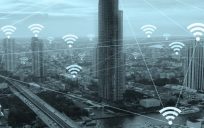![]()
It’s a familiar refrain for those who serve as government employees: do more for your community with less – less budget, less staff, less time. One way that government workers can improve their efficiency and level of service is to harness the energy of the very citizens they are called to serve.
And we can do this in a 21st century way by crowd sourcing. What is crowd sourcing? It is a model where people can contribute to projects via the Internet, basically outsourcing tasks to a larger group of volunteers. (This is what your kids wish they could do when you ask them to do laundry or rake the lawn.)
When it comes to state and local governments, more are engaging the citizens they serve to actively seek their help to achieve a larger goal. The examples around this are really innovative.
Here are a few of my favorites:
- Marshfield, WI: As municipalities work to squeeze the most from limited budget dollars, professionals are being called on to help enable a digital transformation within government. Take the City of Marshfield, Wisconsin, which has developed a GeoReporting System to handle non-emergency (also known as 311) location-based concerns. Incorporating crowd sourcing, the City of Marshfield has developed a way to have citizens report non-emergency concerns directly online versus calling in, emailing, or stopping by in-person. Citizens can report their concern through any internet-connected device, including mobile devices. Concerned citizens can access the city’s crowdsource reporter to choose from 50 different spatially relevant items to report on, including: missing signs; public parking; sidewalk issues; vision obstruction; garbage missed; junk vehicles; building abandonment; or overgrown yards/weeds to name a few. While it has only been public-facing for a few weeks, more than 100 incidents have been reported already.
- Brooklyn Park, Minnesota: With a population of more than 80,000, Brooklyn Park is the sixth-largest city in Minnesota and the fourth-largest in the Twin Cities metropolitan area. Working within the confines of their legacy system, Brooklyn Park created both internal and public-facing apps to make important city information easier to access. Their Adopt a Hydrant app encourages residents to take responsibility for specific hydrants and shovel them out of the snow following winter storms. The response has been encouraging, with 76 fire hydrants adopted through the app in 2016.
- New Orleans, Louisiana: Following devastating natural disasters like Hurricane Katrina, the City of New Orleans recognized that their city would benefit from an open and easily accessible property condition survey which would inform the creation of a baseline – a complete inventory of all of the cities properties and assets to document pre-event conditions when disaster strikes. The City has worked to collect images of all properties and then began seeking the public’s help in their effort to measure property condition, building condition, and elevation in an unbiased manner. Called New Orleans Property Survey, the city decided to crowd source this effort in a unique way: image collection and scoring are separate tasks; properties are presented to the user in random order; data is collected through webcams mounted on cars and scored virtually allowing for frequent updates; and volunteers can work virtually to score properties regardless of their location. Launched in 2014, this crowdsourcing program continues to be an active project for the city.
The workload can be tough for state and local government teams, but actively seeking the help of citizens through crowdsourcing apps can be a real lifesaver and help move much needed projects forward.
Christian Carlson is part of the GovLoop Featured Blogger program, where we feature blog posts by government voices from all across the country (and world!). To see more Featured Blogger posts, click here.





Leave a Reply
You must be logged in to post a comment.